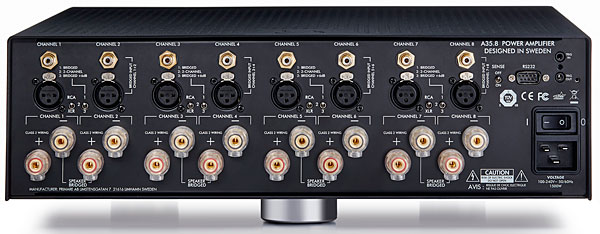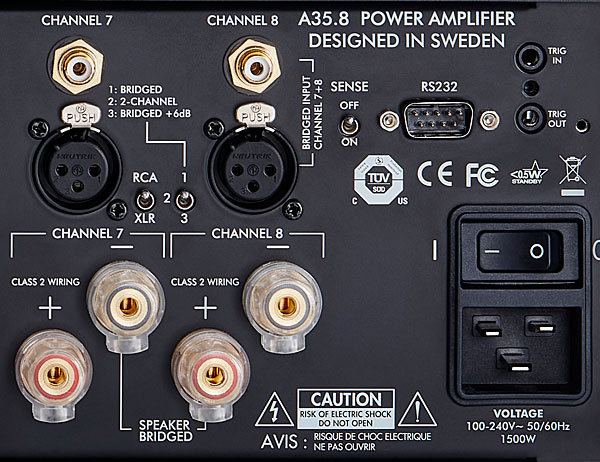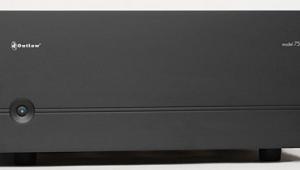Thank you for giving this detailed review
logistics companies uae
Primare A35.8 Eight-Channel Power Amplifier Review

AT A GLANCE
Plus
Fault-free sound quality
Flexible, with bridged-mode, balanced options
As much as 740 watts on tap in bridged mode
High quality fit and finish, quiet Scandinavian looks
Minus
Expensive
THE VERDICT
Eight channels of unimpeachable Class D power in a fairly compact and very flexible package.
Let's face it, amplifiers are a necessary evil. Unless you're listening to a crystal radio through a flesh-colored earphone, you're not going to hear much of anything without at least one amplifier between the music and your ears.
The amplifier's job is pretty simple: "make bigger but don't change anything." But that doesn't mean it's easy. Audio designers have been wrestling with amplifier types and topologies for more than a century, balancing power, size, weight, heat, and cost in near-endless iterations. Then along came class D, which upended the juggling match, combining new highs (power) and potential lows (all the rest) in one small package. And don't call it digital, 'cause it's not—there's no quantization per se—but that's a story for another time.
Exhibit A: the new A35.8 power amplifier from Sweden's Primare. It employs an octet of Hypex Ncore (NC500) class-D modules, with Primare's own power-supply, input, and heat-sink refinements, to provide eight channels of power, each capable of dumping up to 150 watts into 8-ohm loads (or 400 watts into 2 ohms), from a chassis that's smaller and lighter—though at 33 pounds, not exactly featherweight—than many a stereo power amp. (Hypex is a Dutch firm, founded by Mister Class D, Bruno Putzeys. Putzeys is ex-Philips, where he developed the technology upon which Ncore amplifier modules and subsequent versions are based.)

The 35.8 is a plain but handsomely finished black slab (also available in brushed silver), unadorned on the front except for a pilot LED and etched Primare logo, which cleverly encircles the power button. The rear panel more than makes up for the fascia's austerity, teeming with eight channel groupings, plus an RS-232 serial port (for custom-system control and comms), 12vDC trigger input and output on minijacks, and an IEC AC inlet. The power inlet is the seldom-seen 20-amp variety with three horizontal blades in place of the more familiar vertical ones, so don't misplace the supplied power cord: the many you have in your junk closet won't work (ask me how I know).
Each of the aforementioned channel groupings comprises an unbalanced RCA input, a balanced-line input (XLR male), and a speaker output on heavy-gauge multi-way posts, unfortunately spaced too widely for dual-banana plugs. (I believe this is due to a Euro safety regulation that aims to prevent AC power from being accidentally applied. Lord, protect us from ourselves.) Each grouping also gets two mini-toggle switches. One selects either the unbalanced RCA or balanced XLR input; the other chooses among three modes: Bridged, Channel, and "Bridged +6dB."

Channel is the baseline, supplying 150 watts (8 ohms) to the channel in question. Bridged combines adjacent odd- and even-numbered channels for a claimed 740 watts (8 ohms, at 1 kHz), wherein you connect your speaker wire to the even-numbered channel's "+" terminal and the odd-numbered channel's "–" terminal. "Bridged +6dB" does exactly the same but compensates for the 6dB increase in input-sensitivity bridging engenders, allowing a mix of bridged and unbridged speakers to remain aligned in level.
Bridging provides the flexibility to accommodate a number of different system layouts, with or without an additional amplifier (such as Primare's two-channel A35.2). Using the A35.8 alone, for example, you could bridge three pairs of outputs to drive the front left, center, and right speakers in a 5.1 system and use the two remaining outputs to drive the rear surround speakers. For a 5.1.2 (Atmos) or 7.1 setup, you would bridge one pair of outputs to drive the center speaker and use the remaining six outputs to power the rest of the speakers. For systems with more speakers, such as my 5.1.4 Atmos setup, you will need an additional amplifier, which may be a stumbling block for some. All of these scenarios, of course, assume a powered subwoofer.
Setup
Primare obligingly sent along a sample of its Pre35 Prisma preamplifier/streamer, which has balanced outputs optimized for its sister amp, so I dutifully connected it up with the A35.8 for my initial stereo listening. With eight channels on the table, I divided my listening into four sessions. First, with two of the amplifier's eight channels (3 and 5, if it matters) driving my Energy 2.2 three-way, stand-mount speakers full-range. Next, with two sets of channels (3-4 and 5-6) bridged, once again running full-range stereo. Third, with all eight channels bridged into four 700-plus-watt channels driving the Energys in a bi-amped configuration with one über-channel feeding each woofer or midrange/tweeter complement.
- Log in or register to post comments
































































